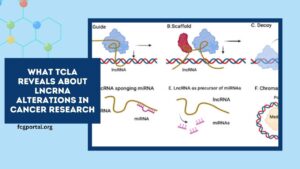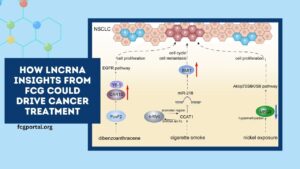Cancer is notoriously complex, arising from intricate interactions across multiple molecular layers.
The Functional Cancer Genome (FCG) Portal offers a groundbreaking integrated omics platform by melding genomics, functionomics, and pharmacologenomics—empowering researchers to unravel the molecular underpinnings of tumors with unprecedented clarity.
What “Integrated Omics” Means via FCG
- Genomics: Examines genetic alterations, including those in histone-modifying enzymes, which are frequently dysregulated in many cancers and serve as actionable drug targets.
- Functionomics: Maps functional consequences of genetic changes, revealing how alterations impact tumor biology.
- Pharmacologenomics: Bridges genomic alterations with therapeutic strategies, including innovative approaches such as treatment‑induced BRCAness—a combination therapy paradigm currently under trial.
Why Integrated Omics Matters in Cancer Research
| Integrated Omics Layer | Advantage |
|---|---|
| Genomics | Detects high-frequency mutations in histone modification genes—enabling target identification. |
| Functionomics | Reveals how genetic changes drive cancer biology—informing mechanistic insights. |
| Pharmacologenomics | Connects molecular features to therapy—e.g., synergistic treatments like BRCAness. |
| Multi-Layer Integration | Consolidates data for clearer biomarker discovery and therapy design. |
Latest Advances Enabled by FCG’s Integrated Omics
- Therapeutic Target Discovery: Genomic profiling centralizes histone-modifier enzymes as ideal drug targets, thanks to recurrent alterations.
- Novel Treatment Strategies: Developing “treatment-induced BRCAness” demonstrates innovative cancer therapies, now in phase II trials and showing encouraging responses.
- Precision Oncology: Uniting omics layers sharpens biomarker identification, stratifies patients, and accelerates tailored treatment breakthroughs.
How FCG’s Integrated Omics Drives Cancer Progress
- Robust Biomarker Discovery – Multi-layer data integration enhances reliability in identifying biomarkers tied to tumor progression or treatment response.
- Mechanistic Understanding – Integrating functional context with genetic data illuminates disease mechanisms and points toward network vulnerabilities.
- Targeted Therapy Design – Weaving pharmacologic insights via pharmacologenomics guides rational therapy combinations (such as inducing BRCAness).
- Clinical Translation and Validation – Tools like FCG facilitate moving discoveries from research to real-world therapeutic applications.
The FCG Portal’s integrated omics platform—fusing genomics, functionomics, and pharmacologenomics—propels cancer research into a new era of precision medicine.
By illuminating histone-modifier alterations, enabling novel therapeutic concepts (like induced BRCAness), and delivering actionable insights, FCG stands as a vital resource for unlocking breakthroughs in cancer diagnosis, treatment, and patient-specific care.
FAQs
What are the three omics layers integrated by the FCG Portal?
- Genomics for genetic alterations, Functionomics for biological impact, and Pharmacologenomics for linking findings to treatment strategies.
What makes “treatment-induced BRCAness” notable?
This innovative strategy mimics BRCA-deficiency in tumors to sensitize them to certain therapies and is currently showing promising phase II clinical responses.
How does integrating multiple omics improve cancer therapy design?
It delivers a holistic molecular view—connecting mutations to function and treatment—leading to more precise, effective, and personalized therapy development.


